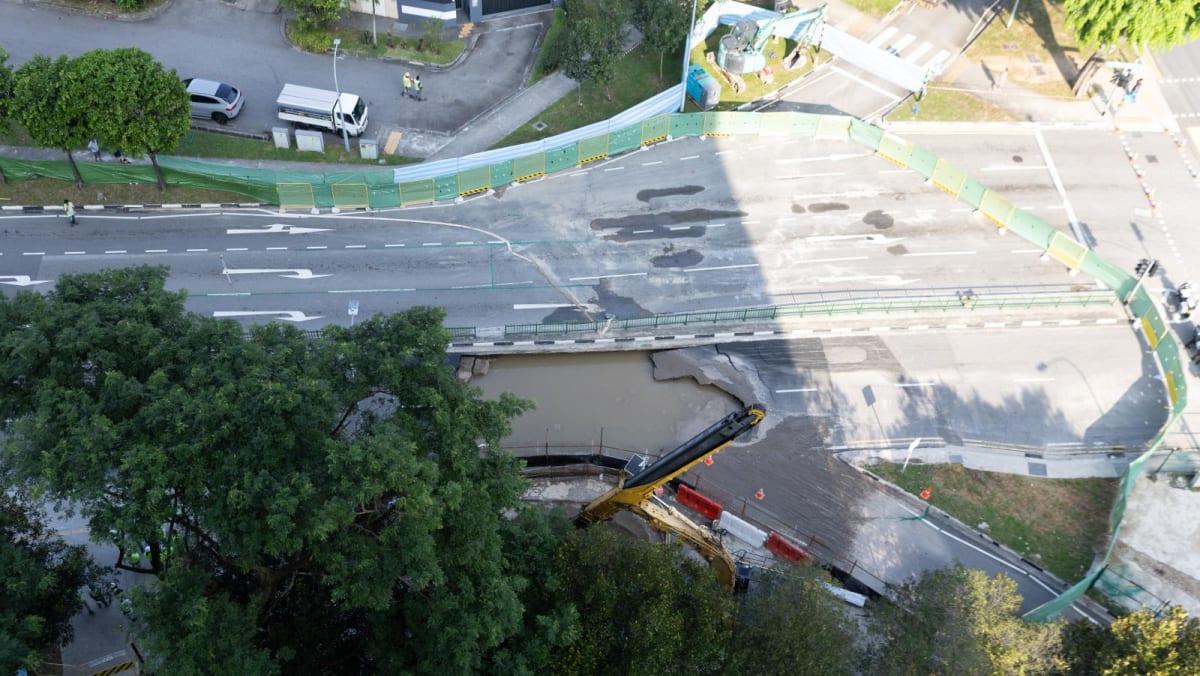What are these shafts and caissons?
Such shafts are typically temporary and required for the construction of sewage manholes, which form a key part of the country’s 206km-long deep tunnel sewerage system and serving as access points for the maintenance of underground sewer lines.
The caisson – and in this case referred to as a ring as it is circular in shape – is a concrete wall that is cast in stages after the excavation of the shaft to keep out water and soil, said Mr David Ng, chairman of the civil and structural engineering technical committee at the Institution of Engineers Singapore (IES).
Intense study of the land prior to construction is required to determine the design of the caisson ring, and if additional land protection measures may be needed.
What could have led to the sinkhole?
Possible reasons for a defective caisson ring may include subpar workmanship, such as how the structure was not built according to initial design, and an imbalance in “loading conditions”.
“Imagine the ring is circular. If you apply the same pressure all around it, it will be stable … But if you take away pressure on one side, like soil on one side, that’s a different loading condition,” said Mr Ng.
“As the caisson ring ‘failure’ occurred around the same time as the sinkhole, it may be that there is a void nearby that is creating an unbalanced loading condition on the caisson ring, therefore the caisson ring ‘failed’.”
On how such an underground void could have been formed, Mr Ng said it was too early to know for sure — but reasons could include soil movement triggered by excavation works or leaking underground pipes.
The latter could wash away soil over time, resulting in empty spaces underground. “If this pipe ends up being suspended without soil underneath it, its joints may give way eventually and a pipe burst can wash away even more soil,” said Mr Ng, who is also executive director of One Smart Engineering.
Residents’ accounts and passer-by footage suggested a burst water pipe in the area, the night before the sinkhole appeared.
But Associate Professor Wu Wei from the Nanyang Technological University said the erosion of soil underground “does not happen overnight”.
Underground voids “take time to be formed” as the surrounding soil is washed away over time and resulting in larger cavities, he said.
